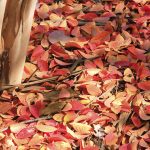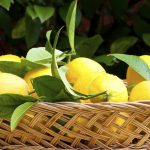Conservation consultant David Abrego’s exploration of a real-life fantasy garden continues. This time he dives deep into a conversation with two vital elements.
A healthy soil is the basis of everything in the landscape and garden. It was quite evident that this glorious garden I was exploring was rooted in fertile ground.
Every tree boasted mighty branches and the shrubs and plants were covered in colorful blooms. And the fragrance from them was intoxicating. I began raking my fingers through the rich, silky earth that surrounded the lush plant life when someone spoke up.
“I didn’t start out this way, you know,” the voice said.
It was the soil speaking to me. It told me of its humble beginnings as thin, shallow earth before nutrient-rich compost and mulch were added regularly to build it up. And then soil told me how it was teaming with life in the form of millions of microorganisms and macroorganisms that lived within it.
“They all work together to transform the organic and inorganic components into food for the plants that depend on me,” soil said. “I am just as alive as the plants are!”
Soil also explained how knowing which type you have — sandy, loamy, thin or clay — is helpful so you know how much water it can hold. Too much water can damage the entire population of microorganisms and allow the development of harmful fungi and other diseases that would damage the plants, explained the soil.
Right then another voice chimed in.
“So many plants and organisms depend on me to move nutrients to them and for photosynthesis,” said water. “Unfortunately when I am overused, instead of doing good I create problems.”
The most precious resource mentioned problems like run off, when the soil can’t hold any more water and it ends up flowing down sidewalks and streets. Or, excess moisture around plant roots encouraging disease and root rot. Overwatering can also wash away good top soil and nutrients from the plants. Contrary to what many people think, soil doesn’t need to be moist all the time, water explained.
“Allowing the soil to dry out some between irrigation cycles helps plants grow robust root systems,” said water.
I nodded in agreement, adding that watering by hand is not only the best way to conserve water, but also to make sure it goes exactly where it is needed. Then I sat back and listened as the water gently trickled away.
Come back next week as I visit with a few winged wonders in this glorious garden.




